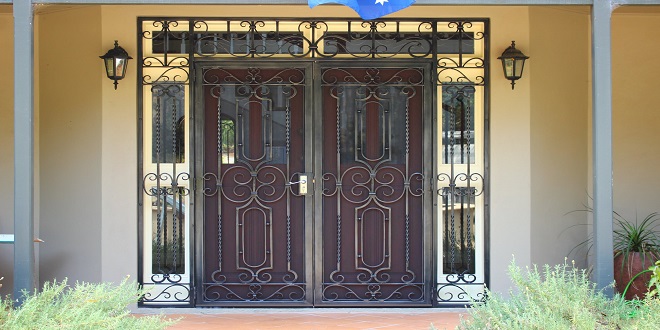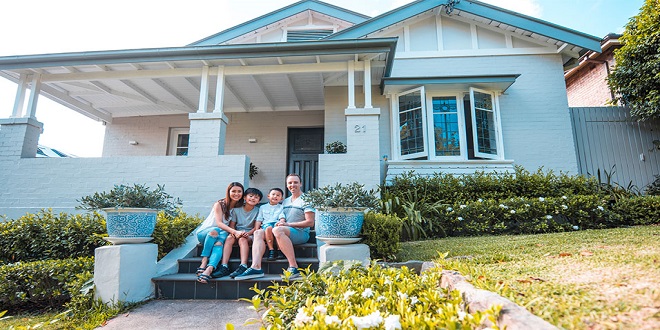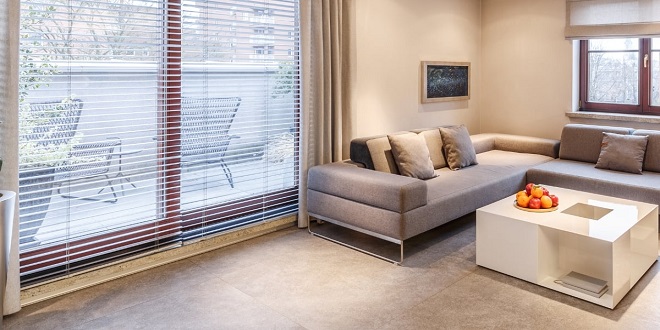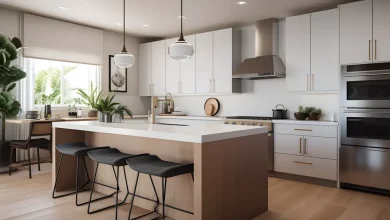Iconic Antique Fireplaces in History

From the simplest hearth in a medieval kitchen to the ornate masterpieces gracing the halls of palaces, fireplaces have continuously evolved to reflect both the technological progress and artistic tastes of their times. Their presence in art, literature, and historical records highlights just how integral they have been to daily life and to architectural aesthetics, particularly in Britain, where many traditions surrounding home life and decoration have been carefully preserved.
According to an antique fireplace specialist at Thornhill Galleries, a finely crafted antique fireplace speaks volumes about the era from which it comes. He notes that while their fundamental purpose was to provide warmth, antique fireplaces often told stories of artistry, craftsmanship, and local tradition. Styles shifted as new materials became available, and as tastes in interior design changed, the fireplace itself remained a focal point of social gatherings and a statement of elegance. Blackwell’s observations ring particularly true when one contemplates the variety of designs that can be found within historic British homes, as well as properties throughout Europe. These treasured architectural features have survived the passage of centuries and continue to captivate those in search of timeless pieces that can add character and history to contemporary spaces.
For individuals who admire the delicate artistry of carved mantels, the elaborate metalwork used in grates, or the patterns that tiles display around the firebox, there is a rich tradition behind these design choices. Fireplaces have been shaped by political shifts, economic fortunes, and technological breakthroughs, leading to a fascinating tapestry of styles that can be traced back to different epochs. In this exploration of iconic antique fireplaces in history, it becomes clear that while design elements changed in response to new influences, the fireplace’s core function as a gathering place remained constant, offering comfort and charm across the centuries.
The Hearth at the Dawn of Civilization
Archaeological discoveries reveal that the first indoor hearths date back thousands of years, with early inhabitants using simple fire pits in domestic spaces to cook meals and ward off the cold. For these prehistoric societies, fire was a matter of survival and a symbol of community. The hearth brought warmth to harsh climates and served as a place for storytelling and social bonding. Though these rudimentary hearths bear little resemblance to the grand stone or marble antique fireplaces that would later be crafted, they set the stage for the fireplace’s enduring role at the heart of the home.
As human settlements grew more sophisticated, so did the design of the interior hearth. Even in early civilizations such as Ancient Rome, the fireplace or brazier was elevated to an artistic element within villas and bathhouses. During the height of Roman civilization, central heating systems known as hypocausts provided underfloor warmth, demonstrating humanity’s ongoing quest to efficiently heat larger structures. While these systems marked a leap forward in heating technology, the conventional fireplace concept survived because it offered both practicality and a sense of homely comfort.
In Britain, the Roman influence lingered, but over time, centuries of regional styles and construction techniques evolved independently. The uniting factor was a practical one: how to contain fire effectively in a way that would neither threaten the building nor waste heat. The earliest recorded hearths built into walls can be seen in ruins of Roman villas scattered across the British Isles, reflecting a merging of imported methods and local practices. These rudimentary hearths foreshadowed the more complex structures to come in medieval times.
The Middle Ages: From Symbolic Hearths to Status Symbols
In medieval Europe, large stone hearths were a common sight in the great halls of castles and manor houses. Typically constructed against a wall, these fireplaces were deep and wide, accommodating substantial fires to heat expansive, and often draughty, spaces. The size of a fireplace was partially indicative of the owner’s wealth and the building’s function. A massive hearth was essential for communal gatherings, feasts, and the general day-to-day activities of medieval courtly life. Stone, being the most prevalent material, lent these fireplaces an imposing presence, which was further enhanced by decorative elements such as carved shields, coats of arms, and inscriptions that displayed fealty or lineage.
The architecture of the Middle Ages was heavily influenced by religion, local traditions, and practical concerns. Castles and churches alike required robust construction techniques to fend off the elements and potential attackers. Against this backdrop, the fireplace had to be both durable and capable of heating large rooms. Yet, the Middle Ages also showed glimpses of artistic flair. In some wealthier households, stonemasons would carve intricate scenes into the surround, combining function with a surprising level of beauty. These early expressions of craftsmanship laid the foundation for the more refined styles that blossomed in later centuries.
One of the most striking examples from this period can be found in certain British heritage sites, where the large inglenook fireplace stands as a reminder of the communal nature of medieval life. Its design, incorporating seating areas within the recess, provided not only warmth but also a place for conversation, intimacy, and storytelling. Such fireplaces captured the essence of a bygone era, wherein the flicker of the flames and the crackle of burning logs were essential components of everyday life. The communal hearth was more than a place to cook and eat; it was the social centre of the home.
Renaissance and the Emergence of Architectural Refinement
With the dawn of the Renaissance in Europe, a renewed interest in classical antiquity led architects and artisans to study the proportions and motifs of Ancient Greece and Rome. In countries like Italy and France, architectural details became a platform for bold experimentation and grand statements. This growing trend for artistic flourishes soon spread to Britain and significantly influenced the design of fireplaces. Wealthy patrons commissioned artisans to create mantelpieces adorned with intricately carved columns, capitals, and classical motifs, elevating the fireplace into a veritable work of art.
During this era, noble families spared no expense in decorating their residences, and the fireplace was often the crowning jewel of a room. Italian marble started to appear with greater frequency, and skilled sculptors fashioned mantels replete with cherubs, mythological figures, and heraldic emblems. The craftsmanship involved was remarkable, as stonemasons managed to render life-like detail in challenging materials. The shift towards more ornate decoration also reflected the Renaissance values of individual expression and a revival of classical ideals.
In Britain, the influence of Renaissance design can be seen in historical estates scattered across the country. Many of these properties boast antique fireplaces that combine both Gothic and classical elements, reflecting a transitional period in architectural history. The symmetrical lines, refined carvings, and grand proportions all signalled a departure from the stark medieval forms, moving instead toward a celebration of luxury and intellectual engagement. Through the Renaissance, the fireplace solidified its identity not just as a source of heat, but also as a canvas for decorative ambition.
The Tudor and Elizabethan Spark
While the Renaissance swept across Europe, Britain experienced its own architectural renaissance during the Tudor and Elizabethan periods. Timber-framed houses became iconic, and brickwork gained popularity, but the fireplace often remained a statement in stone. These eras saw the proliferation of more elaborate chimneypieces, with carved lintels and decorative overmantels that displayed the owner’s status, coat of arms, and personal taste. Indeed, the presence of a substantial chimney became a marker of modernity, as better flue designs allowed smoke to be channelled away from living spaces more efficiently than ever before.
In grand Tudor homes, fireplaces showcased heraldic symbols and intricately carved figures, tying the hearth to familial heritage and royal allegiances. The Elizabethan era, in particular, gave rise to a more ornate style, where wood panelling, tapestries, and decorative plasterwork interacted with the chimney surround to create a cohesive interior scheme. Although open hearths still served the purpose of cooking in some areas of the home, dedicated rooms for dining or receiving guests featured more ornamental fireplaces that signalled the family’s cultured refinement.
Owners of these residences understood the showmanship involved in greeting visitors with a striking fireplace. Some of the best-preserved examples can still be visited in historic manor houses across Britain. Walking into a large hall and seeing the glow of fire dancing across polished stone and richly carved wooden mantels offers a glimpse into a time when architectural detail spoke volumes about lineage and social standing. It is in these Tudor and Elizabethan homes that the fireplace’s cultural significance truly shines, acting as a physical reminder of the power and prestige associated with them.
The Georgian and Regency Eras: Emphasis on Elegance and Proportion
The arrival of the Georgian era marked a pivotal turn in British architecture and interior design. Inspired by the classical principles of Palladianism, architects and designers placed new emphasis on symmetry, proportion, and balance. Fireplaces during this period, while still decorative, began to adopt more restrained lines and motifs. Mantels were frequently crafted in materials such as marble and stone, featuring fluted columns, simple yet elegant cornices, and delicate floral or neoclassical ornamentation. This emphasis on refined elegance made the fireplace a statement of both taste and modernity.
The Georgian period also witnessed a surge in urban development, especially in growing cities like London, Bath, and Edinburgh. Terraced houses and townhomes incorporated fireplace designs that suited more compact living spaces, while still upholding the Georgian ideals of order and aesthetic harmony. Owners often employed renowned architects or interior designers to craft bespoke chimneypieces, reflecting their aspirations and personal flair. The design approach was consistent, however: a balanced proportion around the hearth.
As the Regency era followed, decorative tastes took a slight turn. Inspired by global influences, designers began to incorporate Egyptian, Greek, and other exotic motifs into mantel designs. Brass and cast iron inserts became more commonplace, catering to a broader range of budgets and preferences. These additions complemented the marble surrounds that were so popular, highlighting the harmonious blend of function and style. Fireplaces from this era remain highly coveted, and many preserved examples can still be found in historic squares and crescents throughout British cities. Their elegance, combined with subtle decorative embellishments, speaks to a period of growing sophistication and worldly curiosity.
The Victorian Era: Technological Advances and Eclectic Design
The Victorian period saw an explosion of creativity driven by the Industrial Revolution. As new manufacturing processes and materials became accessible, fireplace design began to reflect a blend of styles, shapes, and influences. The eclectic nature of the Victorian age, which drew inspiration from Gothic, Renaissance, and even Eastern aesthetics, meant that fireplaces could vary wildly from one property to another. Cast iron surrounds and tiled inserts became staples in many middle-class homes, thanks to the advent of mass production. Meanwhile, wealthy homeowners commissioned bespoke, hand-carved mantelpieces that showcased a fusion of Gothic revivals and neoclassical motifs.
Alongside these design changes, improvements in chimney technology and the introduction of coal as a primary fuel source reshaped how homeowners thought about heating. Grates, inserts, and register stoves made fireplaces more efficient, while also influencing their appearance. Ornamental tiles offered opportunities for artisans to display colourful, detailed patterns inspired by botany, mythology, and far-flung cultures. For some, these decorative touches were a chance to bring the latest styles into their domestic sphere.
Beyond design, the proliferation of newspapers and catalogues in the Victorian era allowed manufacturers to market their fireplaces widely, changing the consumer landscape. Households could purchase everything from the most basic cast iron insert to lavish marble chimneypieces. This era not only expanded the variety of antique fireplaces but also democratised the process of home heating and interior decoration. Today, Victorian fireplaces remain a popular choice for homeowners and restoration projects, as they encapsulate both the industrial spirit of progress and the enduring British love for decorative flair.
The Edwardian Continuation and Twentieth Century Shifts
When the Edwardian period succeeded the Victorians, there was a tendency towards lighter, more restrained décor, partly in reaction to the heavy ornamentation of the previous era. Fireplaces from this time combined a lingering Victorian love for cast iron details with simpler, more linear forms. Designs could feature Arts and Crafts motifs, reflecting a broader shift toward craftsmanship and away from the highly industrialised designs of the late 19th century. Subtle floral patterns, pastel-coloured tiles, and understated mantels became more common, offering a refined elegance that complemented the airy interiors favoured by Edwardian homeowners.
As the 20th century progressed, central heating systems and new technologies gradually reduced reliance on the traditional fireplace. Modernist architecture often eliminated ornate chimneypieces, favouring minimalist lines and alternative heating solutions. Yet, throughout periods of architectural and cultural upheaval, many property owners retained their original antique fireplaces, recognising the charm and historic value they brought to a space. Even in the post-war era, when sleek electric fires and radiators were introduced, a significant portion of British homes held on to their fireplaces—some purely for decorative use, others still fully functional.
The late 20th century and early 21st century saw renewed interest in restoring heritage properties. As homeowners and developers endeavoured to maintain period features, many began seeking authentic antique fireplaces London residents might find appealing. It was not merely about heating anymore; it was about preserving an integral piece of architectural history. Specialist workshops and galleries dedicated to these design elements emerged, serving collectors, interior designers, and property owners alike. This revival has ensured that these historical fixtures remain centrepieces of countless living spaces, bridging the gap between past and present with their timeless appeal.
Modern Reproductions and the Legacy of Antique Fireplaces
Today’s interior design trends often celebrate the clash between modern minimalism and traditional flourishes, and nowhere is this more evident than in the use of a vintage hearth in a contemporary setting. Sleek lines and open-concept living rooms provide an intriguing contrast to the ornamentation of a historical chimneypiece. These juxtapositions highlight the craftsmanship of earlier centuries, allowing homeowners to enjoy a piece of history without forsaking modern conveniences. Reproductions of 18th and 19th-century fireplace designs are increasingly available, satisfying demand from those who love the aesthetic but lack access to a genuine period property or original piece.
Authentic antique fireplaces remain prized among connoisseurs and design enthusiasts, not just for their intricate carvings or exquisite marbles, but also because they carry a tangible link to past narratives. Interiors that blend vintage elements with contemporary living arrangements often strike a balance that is both visually striking and deeply comforting. Stepping into a room with an ornate Tudor chimneypiece or a grand Georgian mantel can feel like entering a living museum of sorts, where history becomes a part of daily life rather than a distant academic subject.
As sustainability gains relevance in the global conversation, some appreciate antique fireplaces for their potential to be used with environmentally conscious fuel sources or advanced flue systems. While there are modern solutions to heating a home, the romance of a fire crackling within a centuries-old surround remains irresistible. Indeed, the fireplace has come full circle: from being essential to survival, to a symbol of affluence, to an element of nostalgia and artistry.
Looking Ahead: The Enduring Allure of a Historic Hearth
Even as architectural trends evolve, the appeal of historic hearths endures. In an era that celebrates both sleek, modern design and the authenticity of heritage elements, the fireplace remains a focal point of many interiors. For some, it is a tangible connection to the past, a way to keep tradition alive in a rapidly changing world. For others, it offers an aesthetic contrast that can elevate a space’s character. Whatever the motivation, there is little doubt that the fascination with antique fireplaces will persist for generations to come.
Within Britain, where the climate still encourages the comfort of a crackling fire on a cold evening, homeowners and designers alike look for ways to preserve and showcase original features in period properties. For those in metropolitan areas, such as those searching for antique fireplaces London specialists might offer, the choice is often about bringing a sense of timeless elegance into modern apartments or renovated terraces. By blending the old and the new, these individuals create living spaces that feel grounded in history yet alive to the possibilities of the present.
Ultimately, the saga of the fireplace is a testament to humanity’s ingenuity, social customs, and artistic achievements. Beginning as a simple hole in the ground or a niche in a stone wall, it evolved into a medium for artisanal excellence and remains to this day a cherished element of interior design. Whether drawn from the medieval halls of a castle or a Victorian townhouse, a well-preserved antique fireplace is more than mere décor; it is a living piece of history, resonating with the energy of countless fires that once danced upon its hearth. Each flicker of flame is a gentle echo of the people and stories that shaped its form, ensuring that these iconic relics of the past continue to enchant and inspire.





